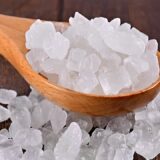What is AMA in Ayurveda? : The Ayurvedic Concept of Toxins
by Ayurvedic India 24/07/2024
In Ayurveda, “ama” signifies undigested food matter that the body absorbs but cannot fully process. This partially transformed substance accumulates within the body, obstructing vital channels and triggering inflammatory responses. As a result, ama is linked to a wide range of health issues. Essentially, ama is Ayurveda’s equivalent to what modern medicine often terms “toxins.”
Ama is formed when the body’s digestive fire, or Agni, is weakened, allowing food to ferment and produce harmful byproducts. Additionally, imbalances in the doshas (Vata, Pitta, and Kapha) can contribute to ama formation.
The accumulation of ama can lead to various health problems, including digestive disturbances, impaired immunity, and chronic diseases. By understanding ama and adopting Ayurvedic principles, individuals can work towards reducing its presence and promoting overall well-being.
How Ama is formed?
Ama, or toxic buildup, is the initial stage of energy decline within the body. It forms due to several factors:
- Weakened Digestive Fire (Agni): When the body’s digestive capacity is compromised, food ferments in the stomach, producing harmful substances.
- Imbalance of Doshas: An improper ratio of Vata, Pitta, and Kapha can also contribute to ama formation.
Ama accumulates in various parts of the body, hindering overall health and well-being.
Causes of Ama Formation
Ama primarily arises from two key factors: improper diet and emotional stress.
Dietary Factors:
- Consuming incompatible food combinations (e.g., milk and fruit)
- Overeating or irregular eating habits
- Ingesting heavy, indigestible, or unpleasant food
- Excessive consumption of raw, cold, or uncooked foods
- Eating foods that cause bloating or irritate the stomach and intestines
- Consuming contaminated or unclean food
- Excessive intake of dry, fried, or dehydrated foods
- Overuse of water when preparing food
Emotional Factors:
- Negative emotions such as grief, anger, anxiety, and fear can weaken digestion and contribute to ama formation.
The Harmful Effects of Ama
Undigested food matter, or ama, accumulates in the colon, forming a sticky, impure substance that obstructs the intestines, capillaries, and blood vessels. Through chemical reactions, toxins are released into the bloodstream and circulate throughout the body.
The accumulation of ama in weak areas leads to various health issues, including:
- Organ spasms, obstructions, stagnation, and weakness
- Weakened immune function
- Development of acute and chronic diseases affecting tissues, organs, and systems
Ayurveda considers ama a fundamental cause of many diseases.
Signs and Symptoms of Ama
Ama, or undigested matter, manifests in various ways within the body. Key signs and symptoms include:
- Srotosangha: Blockage or obstruction of the body’s channels or pathways, leading to impaired circulation, digestion, and elimination.
- Balakshaya: Loss of strength and vitality, resulting in fatigue, weakness, and decreased energy levels.
- Anilamudha: Interference with the normal flow of Vata (air) energy, manifesting as gas, bloating, constipation, and irregular bowel movements.
- Atyapraseka: Excessive salivation, often accompanied by a feeling of heaviness or indigestion.
- Vegavrodha: Disorders related to the urges to defecate, urinate, or pass gas, including constipation, difficulty urinating, and flatulence.
The impact of ama can be observed in the body’s doshas (Vata, Pitta, Kapha), dhatus (tissues), and malas (wastes). When ama is present, these elements are said to be in an imbalanced state (Sama dosha, Sama dathu, Sama mala). Conversely, a body free from ama exhibits balance and optimal function (Prakruti, Nirama dathu, Nirama mala).
Sama Vata: Symptoms and Treatment
Sama Vata refers to the imbalance of Vata dosha due to the presence of ama (toxins) in the body.
Symptoms of Sama Vata
- Blockage of body channels (duct blockage)
- Constipation
- Loss of appetite
- Excessive sleepiness (drowsiness)
- Swelling
- Sharp, piercing pain (feeling of daggers)
- Joint pain or generalized body pain
Treatment for Sama Vata
Ayurvedic treatments focus on reducing ama and balancing Vata. This typically involves:
- Hot, spicy, and dry Ayurvedic herbs and formulations to stimulate digestion and reduce ama.
- Dry rubs or massages using herbal powders to improve circulation and reduce stiffness.
- Niruha Basti: Therapeutic enemas using herbal decoctions to cleanse the colon and balance Vata.
These treatments aim to eliminate ama, restore normal Vata function, and alleviate the associated symptoms.
Sama Pitta: Symptoms and Treatment
Sama Pitta refers to the imbalance of Pitta dosha due to the accumulation of ama (toxins).
Symptoms of Sama Pitta
- Stiffness
- Unpleasant body odor
- Acid reflux or heartburn (belching with acids)
- Burning sensation in the throat and chest
- Greenish or yellowish secretions (waste products)
- Feeling of heaviness in the body
Treatment for Sama Pitta
Ayurvedic treatments for Sama Pitta aim to reduce ama and balance Pitta. This typically involves:
- Bitter Ayurvedic herbs and formulations such as Amrut and Halo to improve digestion and reduce Pitta’s fiery qualities.
- Cooling and soothing therapies to reduce inflammation and discomfort.
By addressing the underlying ama and balancing Pitta, these treatments can help alleviate the symptoms of Sama Pitta.
Sama Kapha: Symptoms and Treatment
Sama Kapha refers to the imbalance of Kapha dosha due to the presence of ama (toxins).
Symptoms of Sama Kapha
- Blockage of body channels (clogged ducts)
- Loss of appetite
- Decreased or absent belching
Treatment for Sama Kapha
Ayurvedic treatments for Sama Kapha focus on reducing ama and balancing Kapha. Key approaches include:
- Fasting (Laghana): Short-term fasting can help cleanse the system and reduce ama.
- Light, easily digestible foods: A diet consisting of light, warm, and easily digestible foods can support digestion and reduce Kapha.
- Digestive stimulants: Herbs and spices that stimulate digestion can help break down ama.
- Sweating therapies: Sweating can help eliminate toxins from the body.
By combining these approaches, it is possible to reduce ama, balance Kapha, and alleviate the symptoms of Sama Kapha.
Sama and Nirama Dhatu
Sama Dhatu
- Impacted Tissue Transformation: When ama (toxins) interferes with the normal transformation of tissues (dhatus), it’s referred to as Sama Dhatu.
- Loss of Function: The affected tissue loses its normal properties and functions due to the accumulation of ama at the cellular level.
- Specific Symptoms: The symptoms of Sama Dhatu vary depending on the specific tissue involved.
Nirama Dhatu
- Healthy Tissue Transformation: Nirama Dhatu represents the normal, healthy state of tissue transformation.
- Optimal Function: Tissues maintain their normal structure and functions without the interference of ama.
In essence, Sama Dhatu signifies a pathological condition due to ama accumulation, while Nirama Dhatu represents a state of health and balance.
Sama Purisha (Abnormal Stool) and Nirama Purisha (Normal Stool)
Sama Purisha (Abnormal Stool)
Stool affected by ama (toxins) is termed Sama Purisha. It exhibits the following characteristics:
- Excessive quantity
- Unpleasant odor
- Sticky consistency
- Lack of defined form
- Floats when immersed in water
These abnormal qualities indicate the presence of ama in the digestive system.
Nirama Purisha (Normal Stool)
In contrast, Nirama Purisha represents healthy, normal stool. It lacks the abnormalities associated with Sama Purisha.
Stool examination (Purisha Pariksha) is a crucial diagnostic tool in Ayurveda. By analyzing the characteristics of stool, practitioners can assess the overall health of the digestive system and identify the presence of ama.
Sama Mutra (Abnormal Urine) and Nirama Mutra (Normal Urine)
Sama Mutra (Abnormal Urine)
Urine affected by ama (toxins) is termed Sama Mutra. It exhibits the following characteristics:
- Cloudy or turbid appearance
- Increased quantity and density compared to normal urine
- Unpleasant odor
These abnormal qualities indicate the presence of ama in the urinary system.
Nirama Mutra (Normal Urine)
In contrast, Nirama Mutra represents healthy, normal urine. It is characterized by:
- Clear and clean appearance
- Normal quantity and density
- Lack of unpleasant odor
Urine examination (Mutra Pariksha) is another essential diagnostic tool in Ayurveda. Analyzing the characteristics of urine helps assess the overall health of the urinary system and identify the presence of ama.
Short-Term Treatment of Ama
Laghana (fasting) is the cornerstone of short-term ama management. By resting the digestive system, the body can focus on eliminating accumulated ama.
Other Therapeutic Approaches
- Dry Sweating Therapy: Using textile bags filled with specific sands, this method induces sweating to help expel toxins through the skin.
- Panchakarma: This comprehensive detoxification process involves preparatory treatments like deepana (digestive stimulants) and pachana (ama-reducing) therapies followed by procedures such as Vamana (therapeutic vomiting) and Virechana (therapeutic purgation).
- Herbal Therapies: Herbs like ginger, castor oil, Guduchi (Amla), Balataka, and Kuchala are commonly used to address ama-related issues. These herbs possess specific properties to stimulate digestion, reduce inflammation, and promote detoxification.
It’s essential to note that these treatments should be administered under the guidance of a qualified Ayurvedic practitioner to ensure safety and effectiveness.
Long-Term Management of Ama
While short-term treatments focus on immediate ama reduction, long-term management addresses the root causes of ama formation.
Key factors contributing to ama accumulation:
- Weak Agni (digestive fire): This is the primary cause.
- Weak Dhatu Agni (tissue-level digestive fire): Impaired metabolic processes contribute to ama formation.
- Exogenous factors: Microorganisms like bacteria, viruses, and fungi can exacerbate ama.
- Metabolic waste accumulation: Improper waste disposal within cells can lead to ama buildup.
- Subtle ama due to negative emotions: Emotional imbalances can create conditions for ama formation.
- Free radical damage: Oxidative stress contributes to ama accumulation.
Long-Term Management of Ama
Long-term management of ama involves addressing the root causes of its formation. Key strategies include:
- Strengthening Agni (digestive fire) and Dhatu Agni (tissue-level digestive fire): Enhancing digestive capacity through diet, lifestyle, and herbal remedies is crucial.
- Optimizing metabolic processes: Efficient waste elimination and tissue rejuvenation support overall health.
- Enhancing immunity: A strong immune system helps combat exogenous factors contributing to ama.
- Managing stress and cultivating positive emotions: Emotional balance is essential for preventing ama formation.
- Protecting the body from oxidative stress: Antioxidants help neutralize free radicals and reduce ama accumulation.
- Regular detoxification: Incorporating gentle cleansing practices into your routine can help prevent ama buildup.
- Personalized lifestyle modifications: Tailoring your lifestyle to your unique constitution (Prakriti) is crucial.
- Consistent Ayurvedic care: Regular consultations with an Ayurvedic practitioner can provide ongoing guidance and support.
By addressing these underlying factors, the recurrence of ama can be significantly reduced, promoting overall health and well-being.
The Importance of Ayurvedic Consultation for Ama Management
Early Detection and Treatment
Consulting an Ayurvedic Vaidya is crucial for the timely diagnosis and management of ama. Through a comprehensive evaluation, including:
- Observation of symptoms: The Vaidya assesses physical manifestations related to ama.
- Tongue examination: The tongue provides valuable insights into digestive health and ama accumulation.
- Pulse diagnosis: The pulse reveals imbalances in the doshas and the presence of ama.
Based on these assessments, the Vaidya can accurately diagnose the extent of ama and its impact on the body.
Tailored Treatment Plans
Following diagnosis, the Ayurvedic practitioner develops a personalized treatment plan addressing both the root causes of ama formation and its consequences. This comprehensive approach ensures effective management and prevention of ama-related health issues.
Remember: While self-care and general Ayurvedic principles can be beneficial, consulting a qualified Ayurvedic Vaidya is essential for optimal health and well-being.
By understanding the nature of ama and its impact on health, individuals can adopt preventive measures and seek appropriate Ayurvedic guidance to restore balance and vitality.
Tags: Ama easy Ayurvedaama in ayurveda in hindiama in ayurveda pdfama in ayurveda ppthow to remove ama from whole bodyPatanjali medicine for ama doshatreatment of ama in ayurvedaTypes of Ama in Ayurveda

























